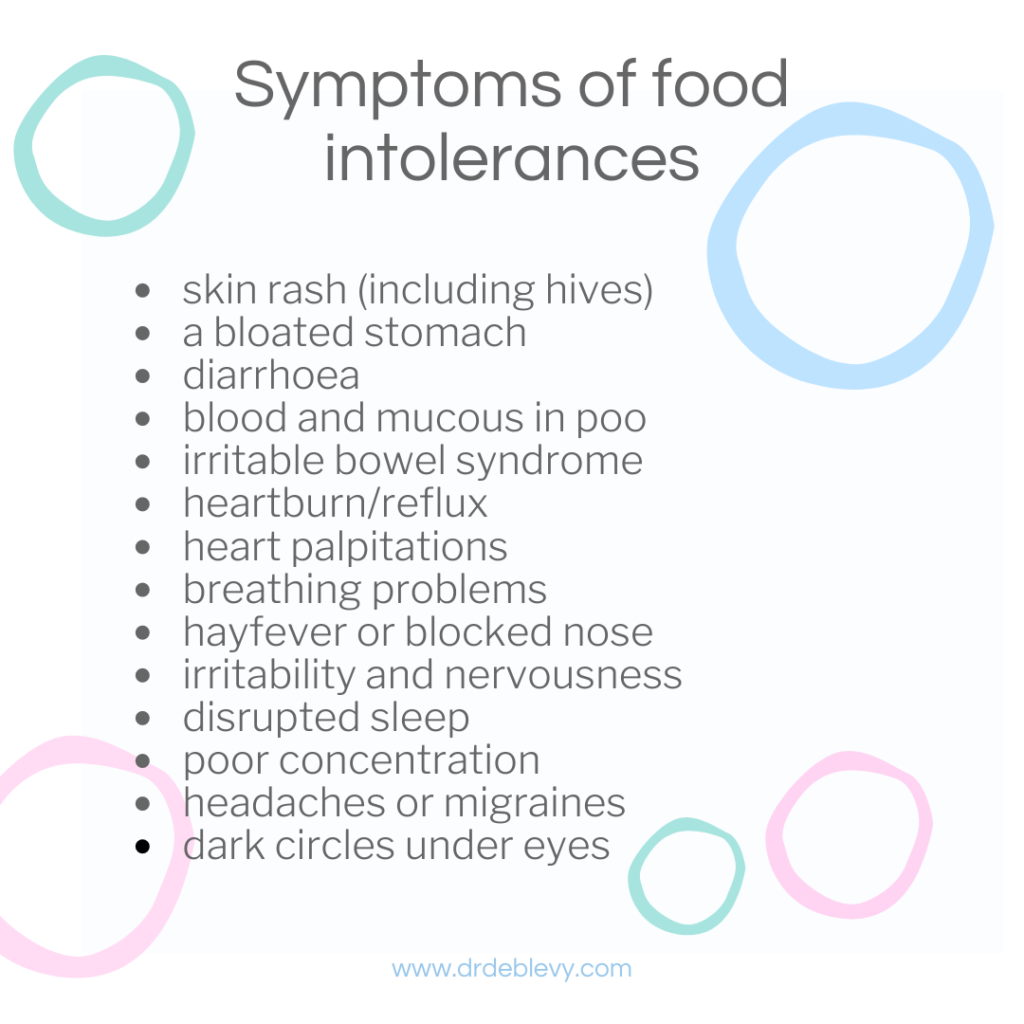
When food hurts
Food intolerance and what it looks like
A food allergy can be very obvious if it involves a rash or breathing problems, but what about behavioural changes, poor sleep or just tummy bloating could these be allergies too? Or are they a food intolerance and what’s the difference?
It’s really important to differentiate between allergies and intolerances (also known as food sensitivities) because it can be life-threatening to miss an allergy. I’ve written about allergies here.
A difference between allergies and intolerances can be explained by how your child’s body responds. With an intolerance it usually isn’t the dramatic reaction of say a peanut allergy, but rather a more subtle reaction that doesn’t involve the immune system. It can result in a variety of symptoms affecting most organs of the body even days after eating the food. The specific mechanism may be clear, other times it isn’t. And if this all sounds very vague or confusing, it’s because it can be! And this means it’s often missed.
Here are some of the symptoms associated with intolerances:

If you’ve read my post on allergies, you’ll notice that there’s some overlap with the symptoms. It’s more likely a food intolerance if you notice that your child doesn’t always get a reaction from a food or if they only react if large amounts are consumed. This is often referred to as a dose dependent reaction. It can also be a very delayed reaction making it hard to identify the food. And another tricky thing is that it’s very difficult to reliably diagnose with a blood test or skin prick test.
So when should we suspect an intolerance? I think the first step is being aware of possible symptoms and also to know the common culprits.
Common food sensitivities
Lactose. This is a very common intolerance and is from a deficiency in the enzyme lactase that digests dairy products. This can cause diarrhea, bloating and gas. It’s especially common after a bout of gastroenteritis but can occur at any time and often runs in families.
Carbohydrates. Here I am referring to poor digestion of sugars like sucrose, fructose or polyols. For example, Fructose Malabsorbtion causing bloating and diarrhoea after eating fruit. Children can also be sensitive to fermentable oligosaccharides, disaccharides, monosaccharides and polyols (FODMAPs). You’ve probably heard of the low FODMAP diet which has had good results in people with irritable bowel syndrome.
Amines (e.g. histamine intolerance). Foods rich in amines often cause migraines in susceptible people but also cause a blocked nose, flushing, rashes including hives and nausea. Foods very high in amines include: ripe avocados, ripe bananas, dried fruits, cheese, fermented foods, processed meats, canned fish and olive oil. Some medications including antibiotics and ibuprofen (nurofen or advil) can also aggravate an amine sensitivity.
Salicylates. This is a natural chemical found in a wide variety of fruits and vegetables making it difficult to avoid. It is also synthetically made and used in cleaning products, perfumes and medications. It typically causes headaches, eczema, asthma, hay fever, hives and tummy upset. Foods that are low in salicylates include most meat, fish, eggs and dairy.
Preservatives and additives. The most common culprits are sulphites, nitrates, artificial sweeteners (aspartame), benzoates, tartrazine and monosodium glutamate (also found naturally). This means you need to thoroughly read all food labels and generally avoid numbers, weird words or abbreviations you can’t pronounce.
You may notice that I’ve not mentioned gluten sensitivity. I’ll write separately about this 🙂
So by now you probably feel that almost any food can cause any symptom. You’re right and this is why it can be so hard to diagnose. It’s also why I recommend being a food detective.
Being a food detective:
- suspect a food intolerance
- keep a food and symptom diary
- eliminate suspect foods and then reintroduce monitoring any change in symptoms
The last step must be done under the guidance of a healthcare practitioner to ensure that a child’s nutrient needs are being met. Eliminating foods from a child’s diet puts them at risk of insufficient calories and nutrients, which could negatively impact on growth and development.
Take home tips
Food intolerances or sensitivities are common and can cause a variety of symptoms
There are some common types of intolerances
They can be difficult to diagnose
If you are suspicious keep a food and symptom diary
Never eliminate foods without consulting a healthcare professional
If you’ve enjoyed this blog, please share it and sign up for my newsletter 🙂
